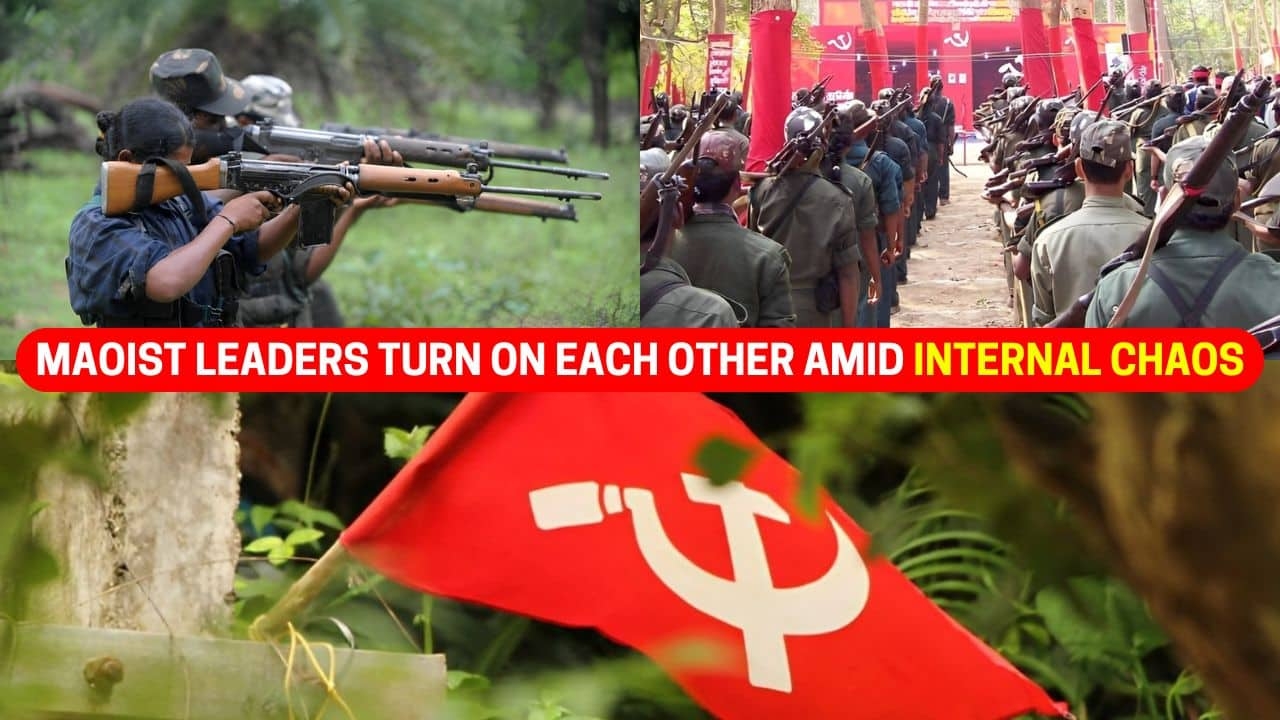Maoist Leadership Crumbles Amid Violent Infighting and Ruthless Betrayals
As the Maoist organisation continues to fracture from within, the ideological battle that once united its members now seems to be tearing it apart.
Total Views |

Over the past few years, the Maoist organisation has been grappling with serious internal strife, leading to violent clashes, murders, and increasing dissent within its ranks.
These incidents, spread across different regions, highlight a growing rift between local Maoists and external leadership, with allegations of betrayal and dissatisfaction surfacing frequently.
Gangloor Area Conflict
One of the most notable events occurred in the Gangloor area of Bijapur on October 2, 2020, when a severe disagreement arose between two senior Maoist leaders: DVCM (Divisional Committee Member) Vijja Modiyam and DVCM Secretary Dinesh.
The clash, triggered by disputes over atrocities against innocent Janjati people, turned deadly when Dinesh and his group executed Vijja.
This incident showcases the increasing frustration within the organisation over its violent tactics, particularly in regions where innocent civilians are targeted.
The Maoist insurgency, once rooted in the ideology of fighting for marginalised communities, now finds itself embroiled in conflicts that further alienate its base.
Murder in Pamed Area
In a more recent event on August 13, 2024, the Maoist communication team in the Pamed area witnessed a shocking assassination. Manish Kursam, also known as Raju, a key member of the Maoist ACM (Area Committee Member), was killed on charges of being a police informant.
Manish hailed from Savnar, a local village, and his death reflects the Maoists’ increasing paranoia about loyalty within their ranks. This growing distrust has led to a surge in brutal punishments against their own members, under the guise of betrayal, as internal dissent and suspicion run high.
Telangana: Killing of Female Maoist Leader
On August 21, 2024, another gruesome murder took place in the Andhra-Odisha border region, in the district of Kothagudem, Telangana. Radhika, a 26-year-old female Maoist known by her alias Neelso, was killed by her own party members.
The Maoist leadership accused her of being a police informer. Radhika had been serving as the commander of the Maoist security team, and her execution reflects the rising distrust and suppression of dissent within the organisation, even among senior leaders.
Rajnandgaon-Kanker Border: Conflict Between Local and External Maoist Leaders
Perhaps the most telling instance of internal strife occurred on the Rajnandgaon-Kanker border on September 6, 2024. The RKBD (Rajnandgaon-Kanker Border Division) witnessed a violent power struggle between Telugu Maoist leader Vijay Reddy and local Maoist members.
Vijay Reddy, who hails from outside the region, had been accused of harassing local Maoists, leading to widespread dissatisfaction. His authoritative actions, coupled with increasing mistreatment of local members, sparked a rebellion led by ACM (Area Committee Member) Raju and his wife, Rajje Madkam.
The situation reached a tragic conclusion when Vijay Reddy, aiming to silence dissent, ordered the murder of ACM Vijja Madkam. Madkam was accused of betraying the Maoist organisation, a charge frequently used to justify killings within the party.
The murder took place in the forests of Malampenta and further exemplified the growing tensions between external and local Maoist factions. The Telugu Maoist’s dominance over local members has created deep resentment, leading to these violent clashes.
Analysis: A Fractured Insurgency
The internal unrest within the Maoist organisation has reached a critical point, with leaders turning against each other and local Maoists losing faith in the insurgency.
According to Bastar Range Inspector General of Police, Sundarraj P., the Maoists have faced significant losses in the Bastar division, particularly in the Dandakaranya Special Zonal Committee area. This has left the organisation leaderless and directionless, with growing disillusionment among its ranks.
The Inspector General further noted that external leaders, mostly from states like Andhra Pradesh and Telangana, have exploited local Maoists for decades.
These external leaders have used local members as human shields, amassing wealth through illegal means while the local Maoists suffer. This exploitation has now come to light, leading to increasing instances of betrayal, rebellion, and mistrust within the organisation.
In light of these events, the police have urged local Maoists to surrender and join the mainstream. With the insurgency facing an existential crisis, surrender seems to be the only viable option for many local Maoists.
The government has also emphasised that it is open to welcoming these Maoists into society and encouraging them to contribute to the peace and development of the Bastar region.
As the Maoist organisation continues to fracture from within, the ideological battle that once united its members now seems to be tearing it apart.
The growing distrust and internal killings have undermined the very foundations of the insurgency, leaving the future of Maoism in regions like Chhattisgarh uncertain.
The question now remains whether the remaining Maoists will heed the call to surrender or continue to fight in an insurgency that increasingly turns its guns on its own.


